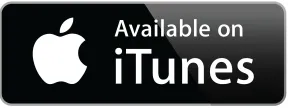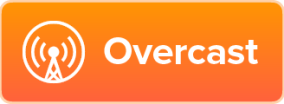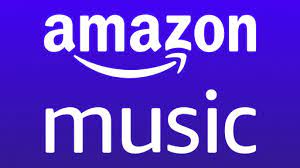
In July 2021, right after WWDC 2021 we recorded an episode predicting the possibilities that Custom Product Pages would unlock for marketers.
For more than a year, these possibilities remained unrealized – because the Custom Product Pages were unavailable on Facebook.
All of that has changed as of September 2022 – with the introduction of Custom Product Pages on Facebook. With this, the biggest challenge on iOS – of marketers being unable to align screenshots and ads to each other – has been overcome.
We’re already seeing some very strong results from aligning ads and screenshots – and in this episode we lay out how we are approaching CPPs – and how we are testing these on our team.



ABOUT ROCKETSHIP HQ: Website | LinkedIn | Twitter | YouTube
KEY HIGHLIGHTS
🐚 What we’d predicted in July 2021.
💐 How to identify what custom product pages to test.
🪨 How to execute CPP tests with Facebook.
🌾 Why you should evaluate the combination of ad, audience and CPP – and not a CPP in isolation.
FULL TRANSCRIPTIn July 2021, we wrote a preview of the then just announced custom product pages(CPP) shortly after Apple had announced it in WWDC 2021.
Custom Product Pages became publicly available a few months later – but were only usable via Apple Search(subsequently Ironsource offered this as well) – however because there was no way to channel specific types of traffic to a custom product page, this had very limited utility.
All of that changed in September 2022 – because Facebook finally made it possible to access and test Custom Product Pages, and with this, the true potential of Custom Product Pages has been unlocked.
We are already seeing some very big wins from Custom Product Pages – and in this episode we’ll outline how we are testing Custom Product Pages with Facebook Ads.
The best place to start is by identifying your top performing ads – and designing custom product pages that correspond to these ads. For instance, the top ad in one of our accounts features a specific character – so we decided to test a CPP with the first screen showing this character.
Another approach could be to identify your top user segments – in our July 2021 episode we had mentioned the below possible use cases, which are very much valid and available now.
- If you’re operating in multiple cities, you could send users from New York and Boston to different city-specific custom product pages. Ad campaigns for New York include New York themed ads, and go to the New York page – ad campaigns for Boston send users to the Boston page.
- You could promote different services, products or genres in different custom product pages. For instance, if your fiction app has romance stories and thrillers, you could highlight both via different custom product pages(and have ads for romance stories and thrillers lead to these separately).
- You could also target different types of user personas via different app store pages. For instance, a strategy game that has 2 personas – builders and battlers could have custom landing pages for each persona. An ad that highlights building can lead to a custom product page for builders, an ad that emphasizes fighting/battling can lead to a custom product page for battlers.
- You could target different demographic profiles via different custom product pages. For instance, you could have separate custom product pages for men vs. women, or for younger vs. older users(if say you’re a fitness app – or a dating app).
Everything we said in 2021 still holds with the CPP rollout on Facebook today.
The real power of the CPP though is in ensuring that your ads or audiences are aligned with your custom product pages. There could be four different possible directions:
- Custom product pages match your top ads
- Custom product pages match demographic segments(eg: gender, age targeting etc.)
- Custom product pages match *both* top ads and demographic segments(eg: ads featuring moms targeting women 25-40).
- Custom product pages matching user personas(builders vs. battlers etc.) – but not necessarily mapped to ads or user segments.
How do we actually execute tests using custom product pages?
Custom Product Pages(CPP) have to be set up in iTunes connect – when you submit a customized set of screenshots to iTunes, and get a distinct URL for each custom product page.
Once you have this URL, you’re able to run tests within Facebook for ads leading to the custom product page. You input the CPP ID at the ad level while you set up each ad.
Typically we recommend testing an ad-CPP combination the same way that you’d run a new creative test(this episode tells you more detail about our approach).
That is to say, start in what we call an ad set with untested ads – typically in a low cost or tier 3 geo – to ensure that you test the performance of the ad – CPP combination before rolling it out to larger spend.
Why is this? Because your CPP isnt proven yet – and even if it is proven for users coming from one ad or one audience, it isnt proven for users from another ad or audience.
Once you run a test for an ad-CPP combination in your untested ad set to evaluate your CPI and IPM numbers, you can roll it out into your core ad set(s), in your core geos.
It’s only been a couple of weeks since this is out, but we are already seeing some very big wins from rolling out CPPs on Facebook – and we highly recommend making this a part of your testing process.
A REQUEST BEFORE YOU GO
I have a very important favor to ask, which as those of you who know me know I don’t do often. If you get any pleasure or inspiration from this episode, could you PLEASE leave a review on your favorite podcasting platform – be it iTunes, Overcast, Spotify or wherever you get your podcast fix. This podcast is very much a labor of love – and each episode takes many many hours to put together. When you write a review, it will not only be a great deal of encouragement to us, but it will also support getting the word out about the Mobile User Acquisition Show.
Constructive criticism and suggestions for improvement are welcome, whether on podcasting platforms – or by email to shamanth at rocketshiphq.com. We read all reviews & I want to make this podcast better.
Thank you – and I look forward to seeing you with the next episode!


